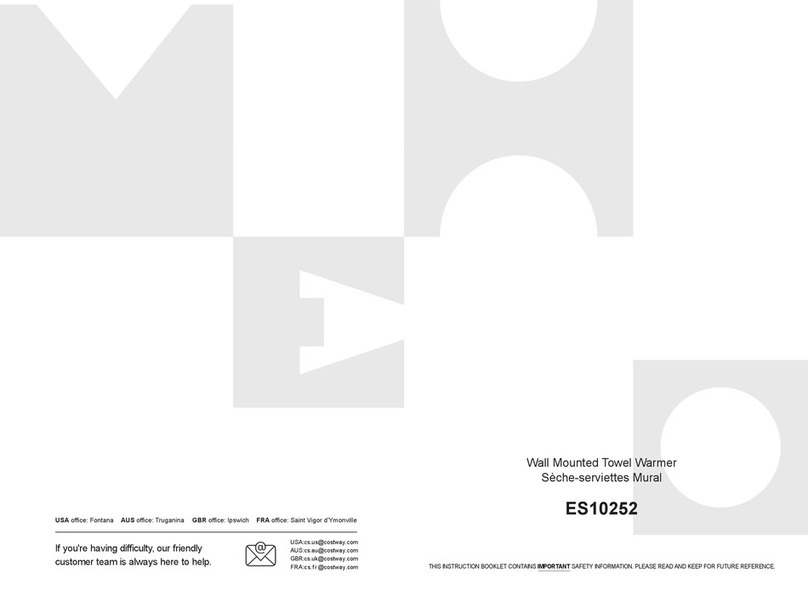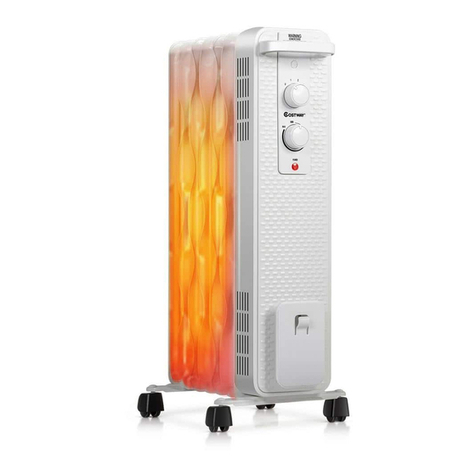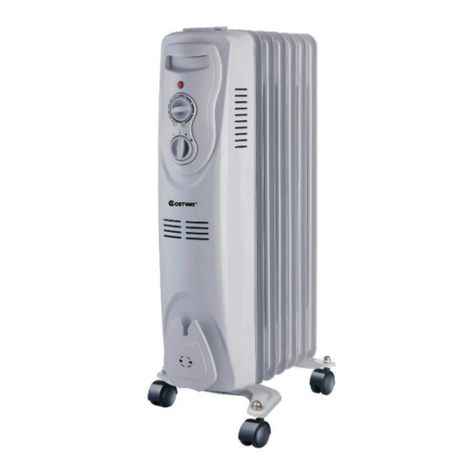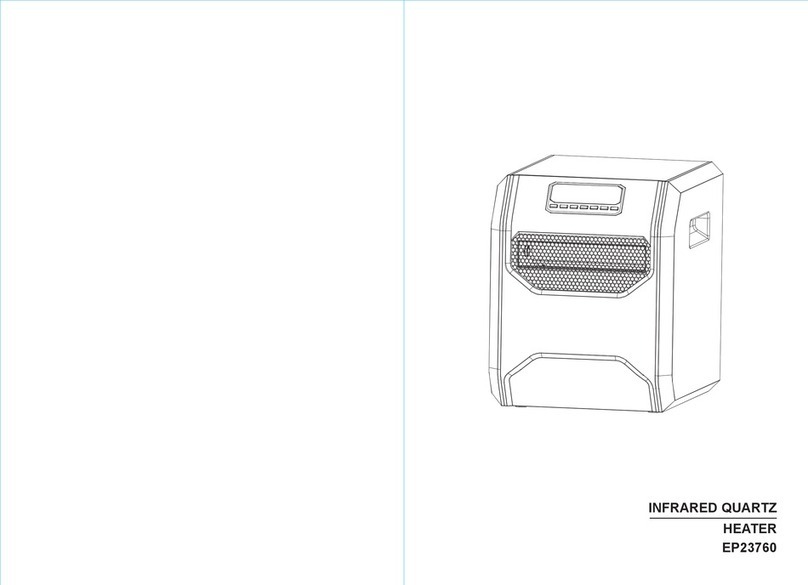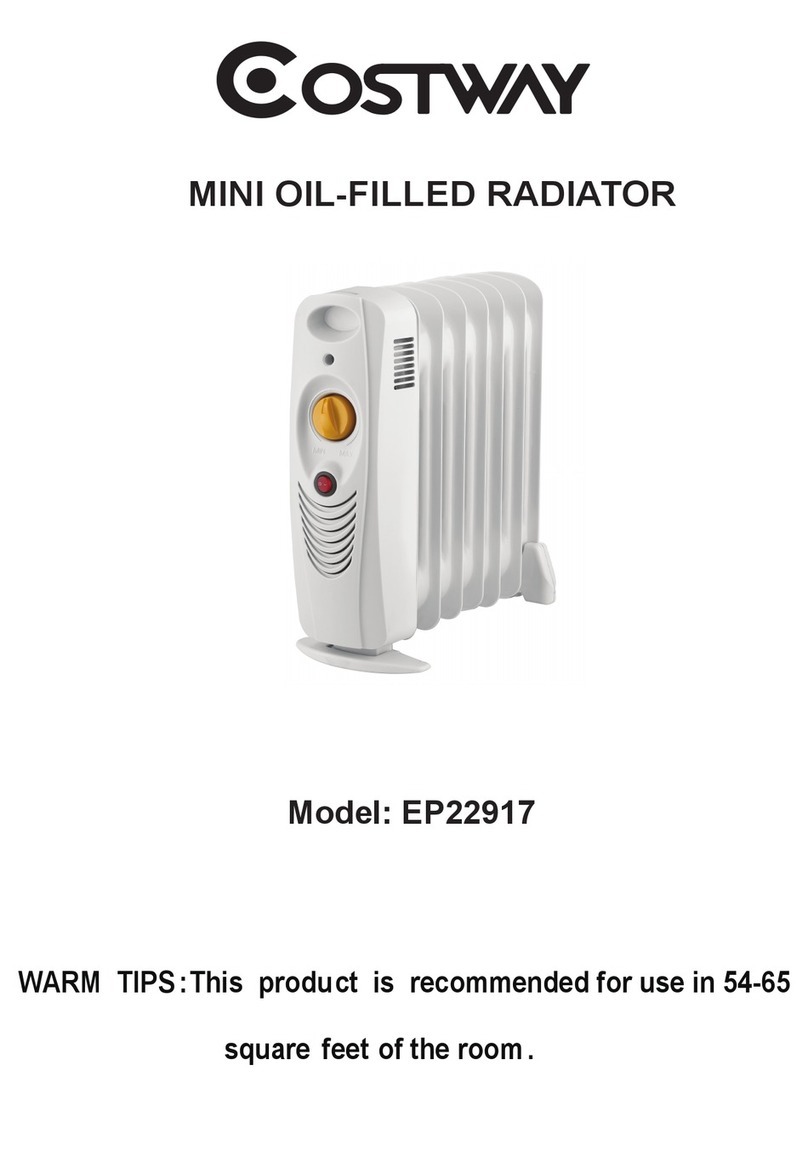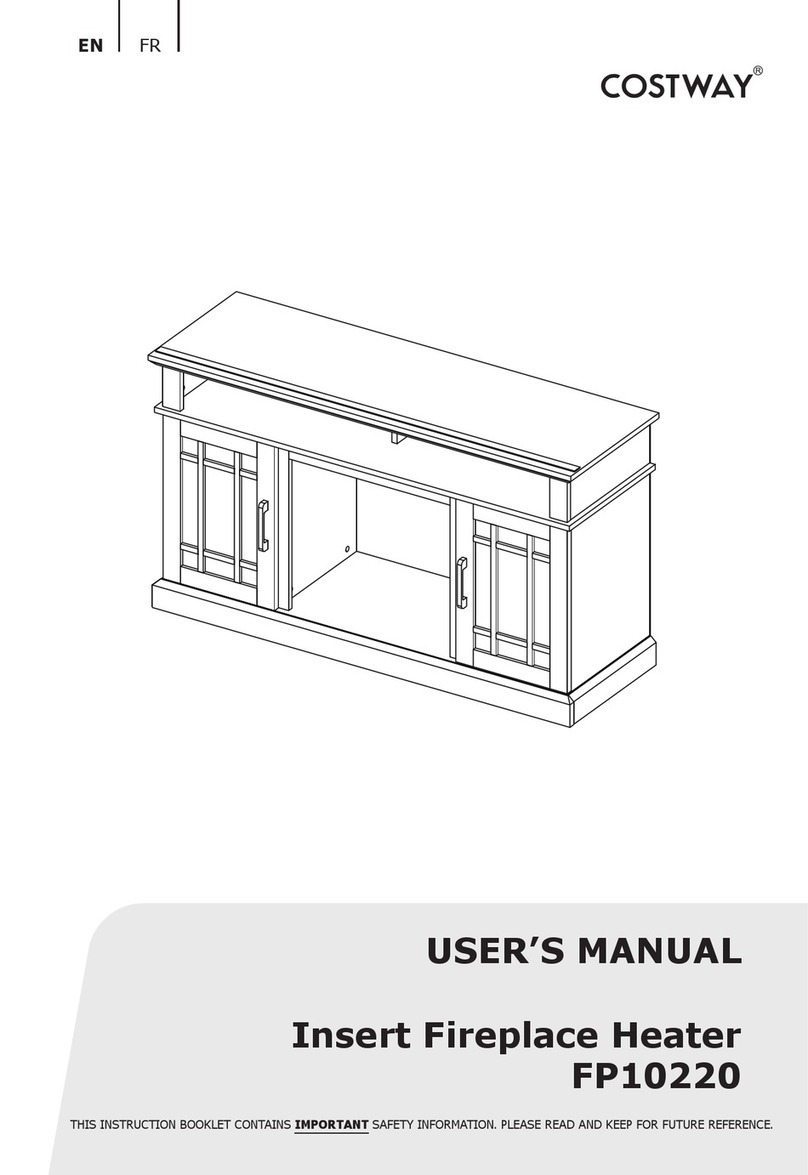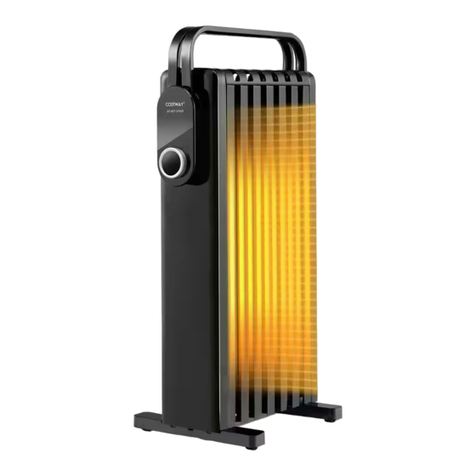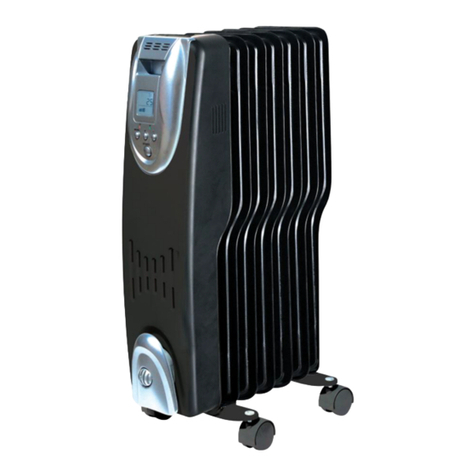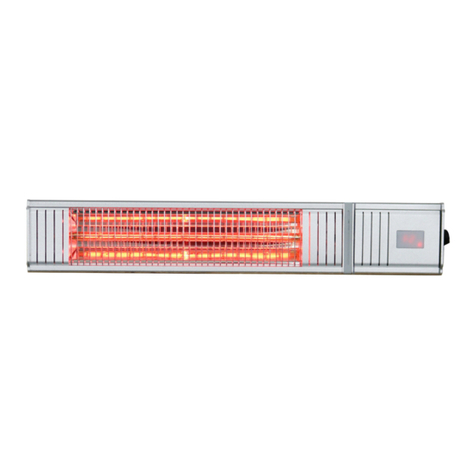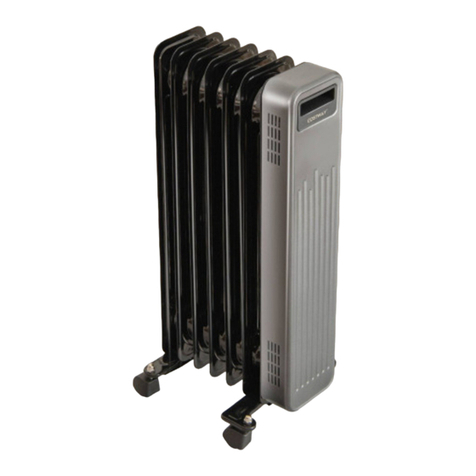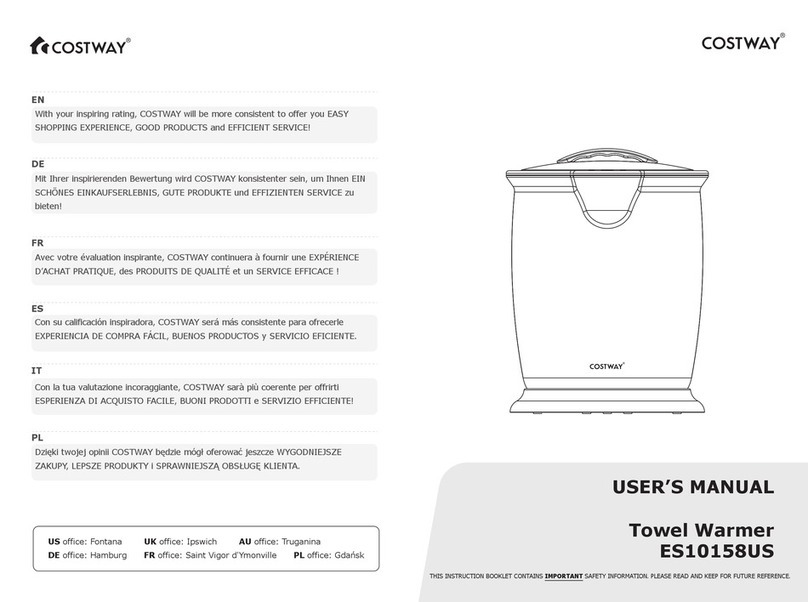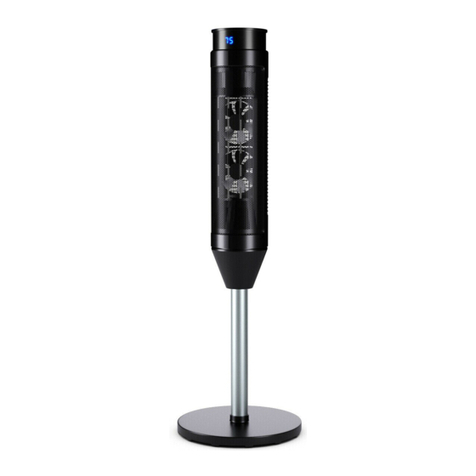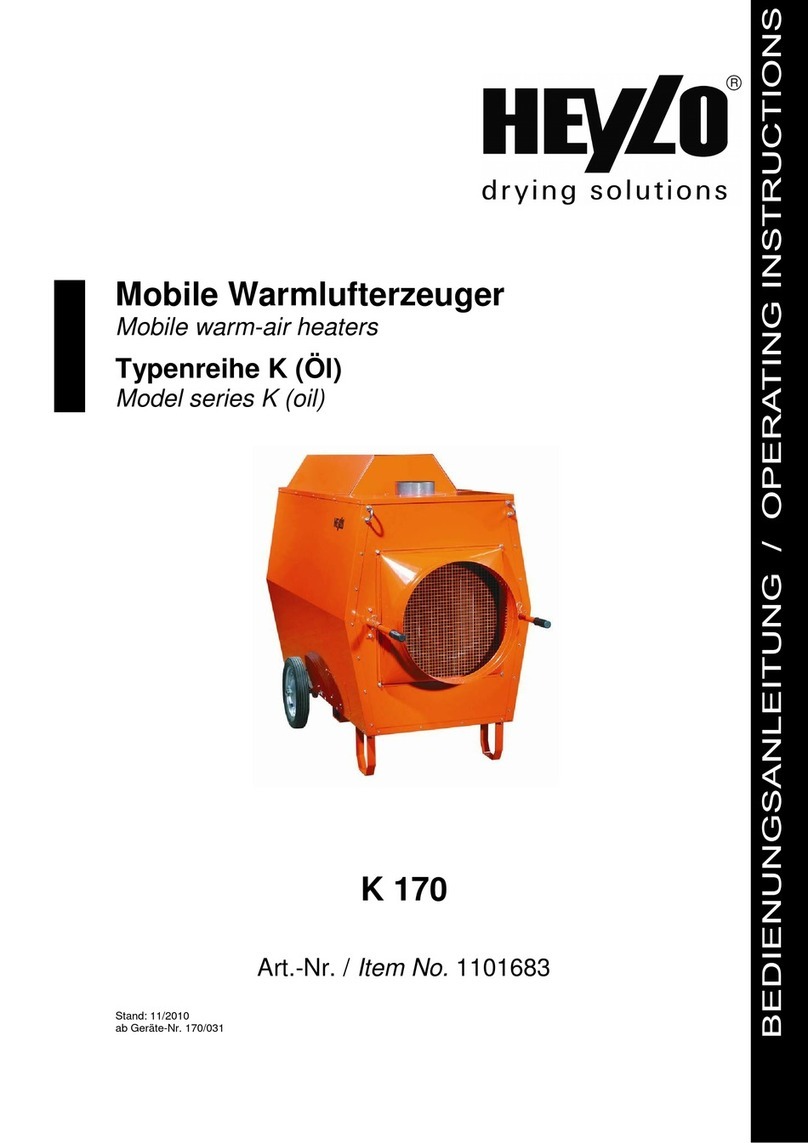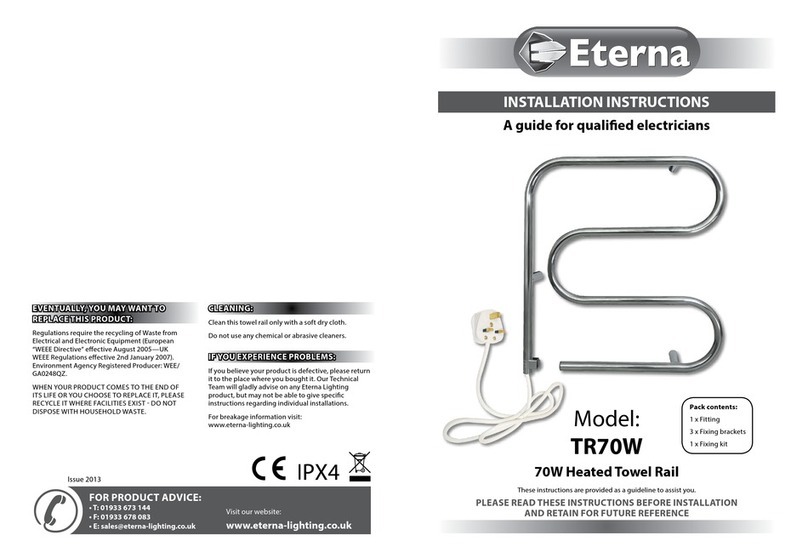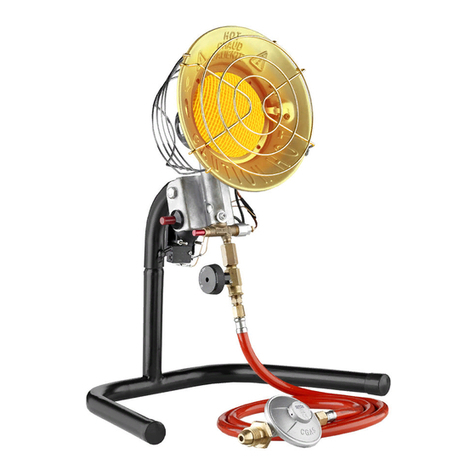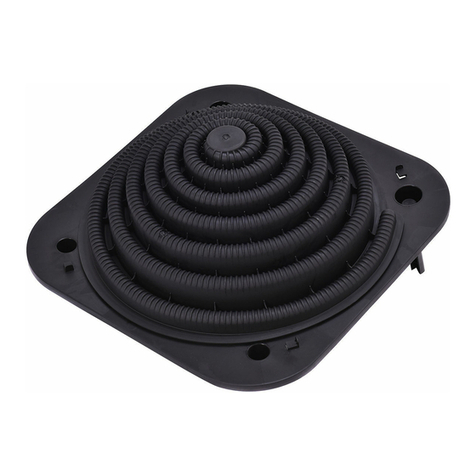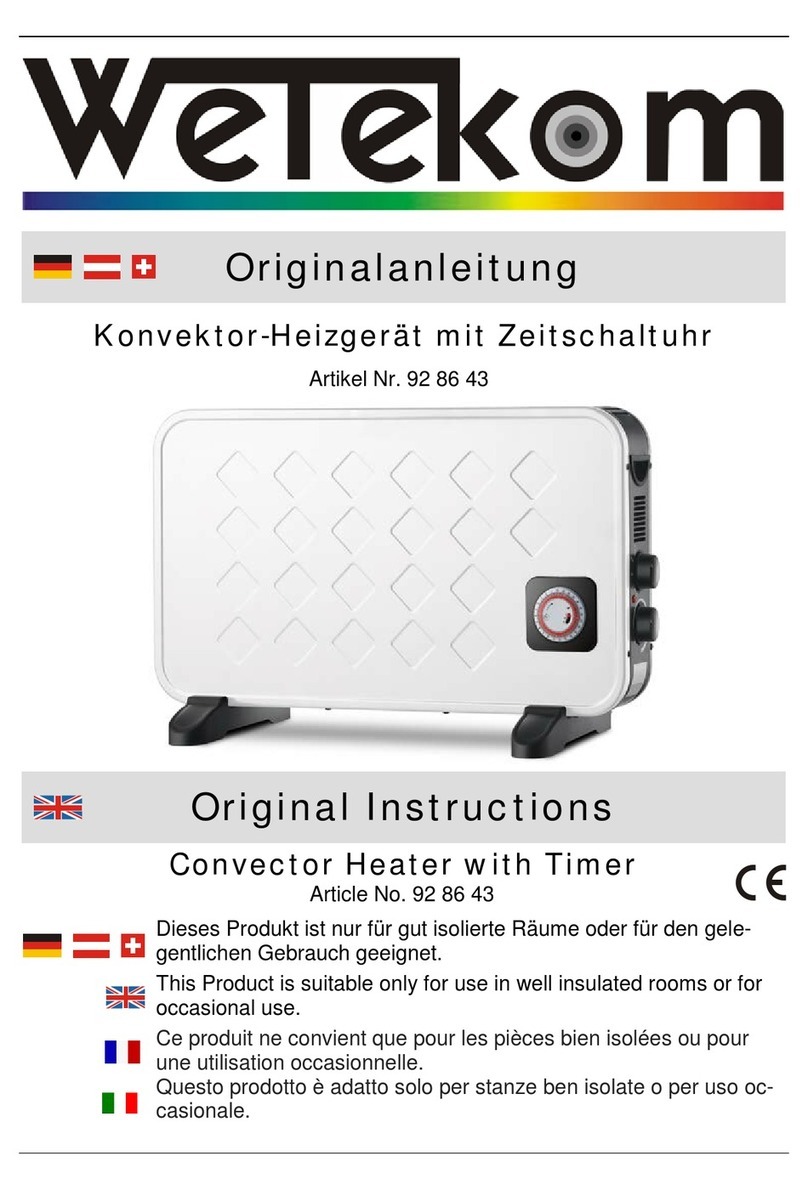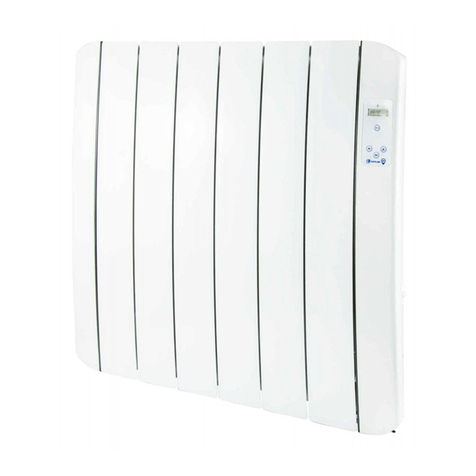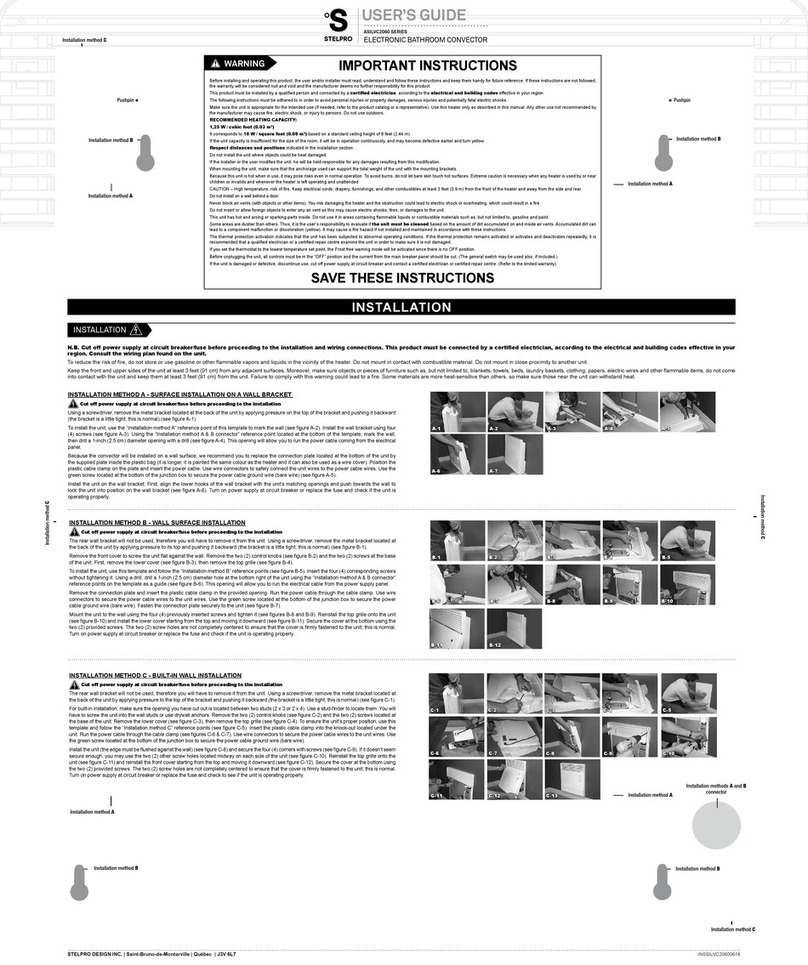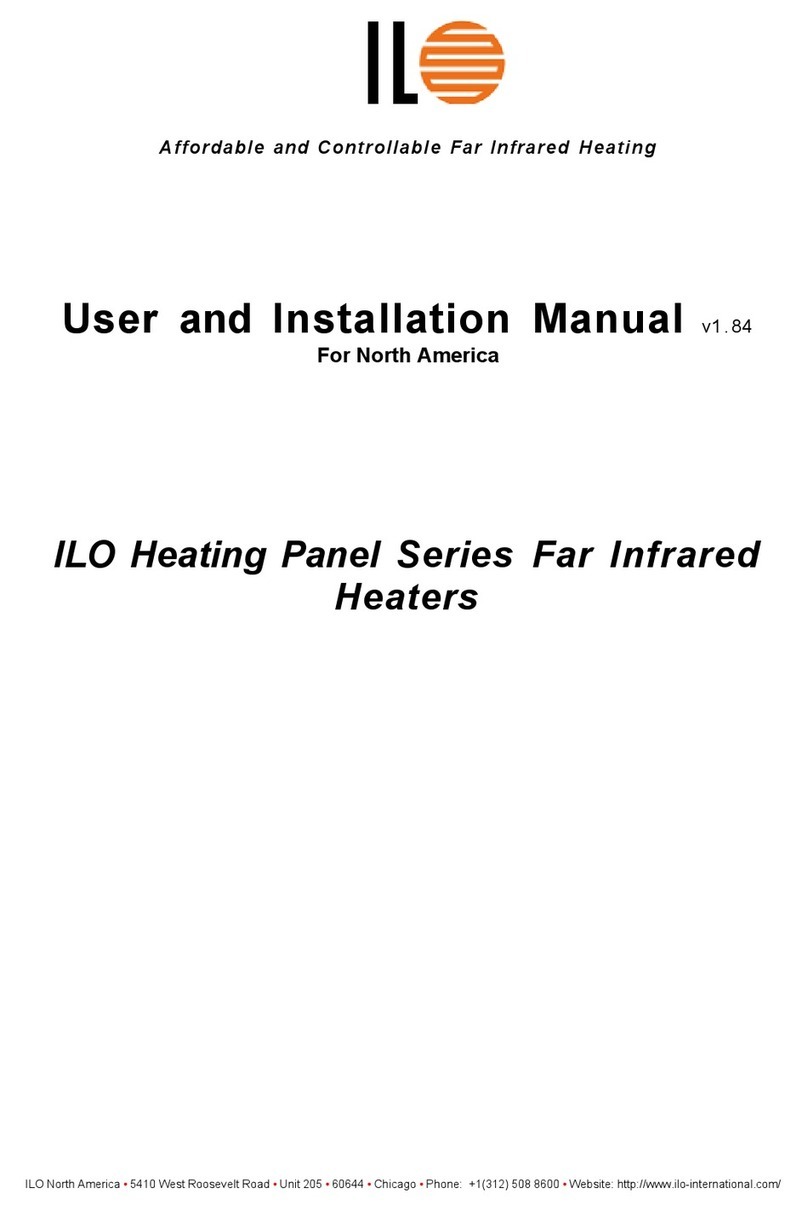
06 07
● This heater should not be directed toward any propane (LP) or gas container
within 20ft. (6.1 m) of the exit nozzle. The heater should also be located at
least 6 ft. (1 .83 m) away from any propane (LP) gas container (For use in
Canada: heater should be located at least 10 ft. (3.05 m) from any propane
(LP) gas container).
● The propane (LP) tank supply system must be arranged to provide for vapor
withdrawal from the operating tank.
PROPANE SAFETY
This heater requires a 20 lb. propane (LP) tank for operation (not included).
Use of this heater with any other propane (LP) tank is not recommended and
can be dangerous.
The propane (LP) gas tank must also be equipped with the following:
● A collar to protect the propane (LP) gas valve.
● A shutoff valve terminating a propane (LP) gas tank valve outlet as specified
in the American National Standard for Compressed Gas Cylinder Valve Outlet
and Inlet Connections.
● A safety relief valve having direct communications with the vapor space of the
tank.
● An arrangement of vapor withdrawal.
The hose assembly must be visually inspected prior to each use of the heater. If
it is evident that there is excessive abrasion, wear or the hose is cut, it must be
replaced prior to the heater being put into operation.
Propane (LP) Fuel Gas Odor.
Propane (LP) gas and natural gas have man-made odorants added speifcally for
detection of fuel gas leaks. It can be described as a rotten egg" smell. If a gas
leak occurs you should be able to smell the fuel gas. Since propane (LP) is
heavier than air you should smell for the gas odor low to the floor
Any Gas Odor Or Smell Is Your Signal Start Immediate Action!
● Do not take any action that could ignite the fuel gas. Do not operate any
electrical switches. Do not pull any power supply or extension cords. Do not
light matches or any other source of flame. Do not use your telephone.
● Get everyone out of the building and away from the area immediately.
● Close all propane (LP) gas tanks.
● Propane (LP) gas is heavier than air and may settle in low areas. When you
have reason to suspect a propane leak, keep out of all low areas.
● While outside the building call your fuel gas supplier and your fire
department. Do not re-enter the building or area in question.
● Stay out of the building and away from the area until declared safe by the
firefighters and your fuel gas supplier.
● Be sure to have the fuel gas service person and the firefighters check for
escaped gas. Have them air out the building and area before you return.
Properly trained service people must repair any leaks, check for further
leakages, and then have them relight the appliance for you.
PROPANE SAFETY (CONTINUED)
Propane (LP) Odor Fading - No Odor Detected
● Some people have dfficulty with smells and cannot smell the odor of the
man-made chemical added to propane (LP) or natural gas. You must determine
if you can smell the odorant in these fuel gases.
● Learn to recognize the odor of propane (LP) gas and natural gas. It can be
described as a“rotten egg”smell. The odorant can fade over time so leaking gas
is not always detectable by smell alone. Local propane (LP) gas dealers will be
more than happy to give you a scratch and sniff pamphlet. Use it to become
familiar with the fuel gas odor.
● Smoking can decrease your ability to smell. Being around an odor for a period
of time can aftect your sensitivity to that particular odor. Odors present in
animal confinement buildings can mask fuel gas odor.
● If there is an underground leak, the movement of gas through the soil can
fiter the odorant but the danger may still exist.
● Propane (LP) gas odor may differ in intensity at difterent levels. Since
propane (LP) gas is heavier than air, there may be more odor at lower levels.
● Always be sensitive to the slightest gas odor. If you continue to detect any
gas odor, no matter how small, treat it as a serious leak. Take immediate action
as discussed previously.
WARNING: Asphyxiation Hazard
● Do not use this heater for heating human living quarters.
● Do not use in unventilated areas.
● The flow of combustion and ventilation air must not be
obstructed.
● Proper ventilation air must be provided to support the combustion
air requirements of the heater being used as listed in this manual.
● Refer to the specification section of the heater's manual or heater
dataplate to determine combustion air ventilation requirements of
the heater.
● Lack of proper ventilation air will lead to improper combustion.
● Improper combustion can lead to carbon monoxide poisoning
leading to serious injury or death. Symptoms of carbon monoxide
poisoning can include headache, dizziness, burning eyes and nose,
nausea, dry mouth or sore throat and dificulty in breathing.

